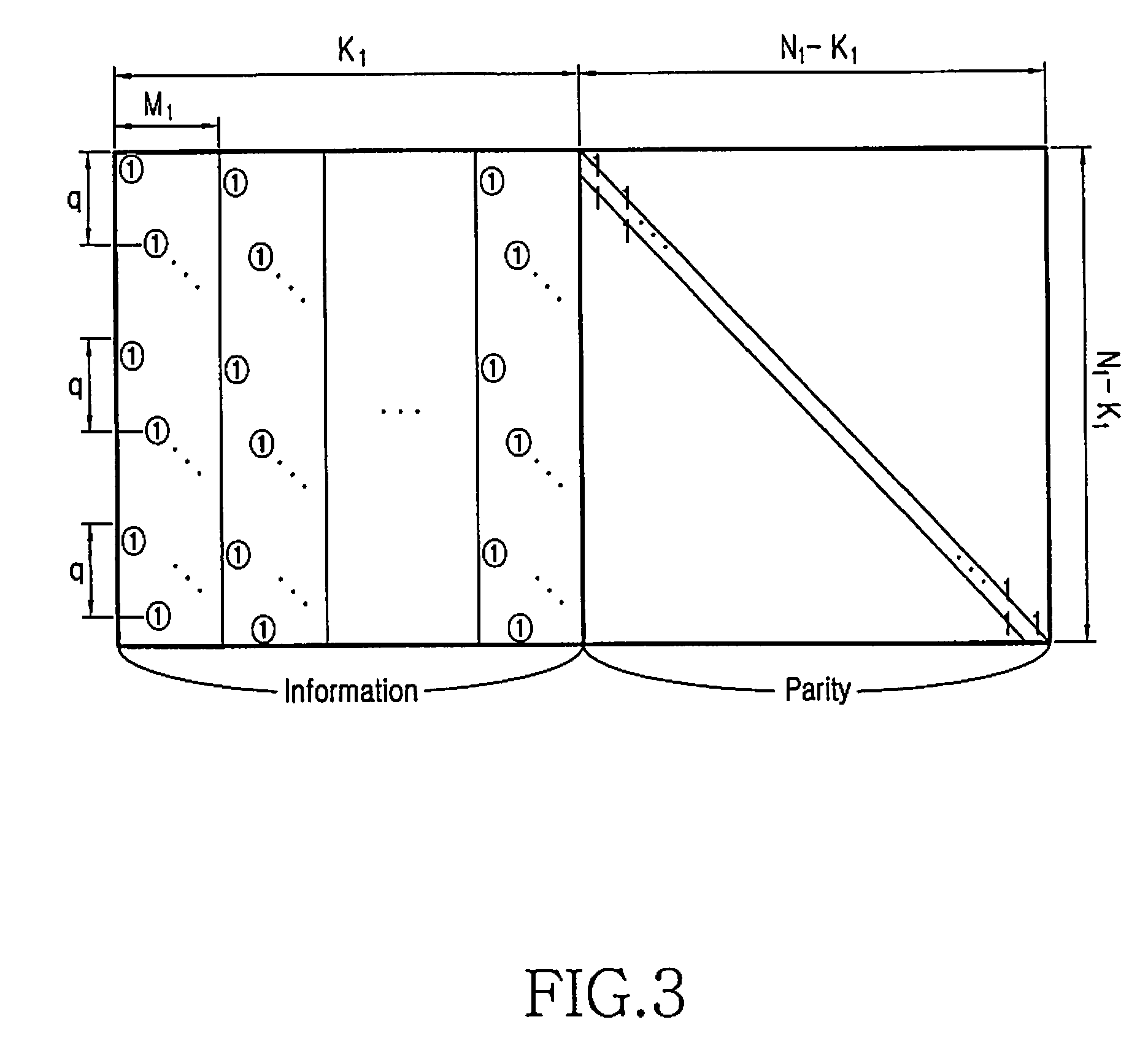Apparatus and method for encoding and decoding channel in a communication system using low-density parity-check codes
a communication system and low-density parity-checking technology, applied in the field of channel encoding/decoding apparatus and methods for generating ldpc codes, can solve problems such as performance degradation, underutilization of ldpc codes, and inability to achieve good tanner graph characteristics
- Summary
- Abstract
- Description
- Claims
- Application Information
AI Technical Summary
Benefits of technology
Problems solved by technology
Method used
Image
Examples
Embodiment Construction
[0068]Preferred embodiments of the present invention are described in detail with reference to the annexed drawings. The same or similar components are designated by the same or similar reference numerals although they are illustrated in different drawings. Detailed descriptions of constructions or processes known in the art may be omitted to avoid obscuring the subject matter of the present invention.
[0069]The present invention provides a method for designing a DVB-S2 LDPC code having a good Tanner graph characteristic. In addition, the present invention provides a method for generating an LDPC codeword using a parity-check matrix of the above-designed LDPC code and an apparatus thereof.
[0070]Structural characteristics of a DVB-S2 LDPC code are described below using a parity-check matrix of a DVB-S2 LDPC code shown in FIG. 4. For the parity-check matrix shown in FIG. 4, N1=30, K1=15, M1=5 and q=3, and weight-1 position sequences of rows for 0th columns in three column groups are as...
PUM
 Login to View More
Login to View More Abstract
Description
Claims
Application Information
 Login to View More
Login to View More - R&D
- Intellectual Property
- Life Sciences
- Materials
- Tech Scout
- Unparalleled Data Quality
- Higher Quality Content
- 60% Fewer Hallucinations
Browse by: Latest US Patents, China's latest patents, Technical Efficacy Thesaurus, Application Domain, Technology Topic, Popular Technical Reports.
© 2025 PatSnap. All rights reserved.Legal|Privacy policy|Modern Slavery Act Transparency Statement|Sitemap|About US| Contact US: help@patsnap.com



